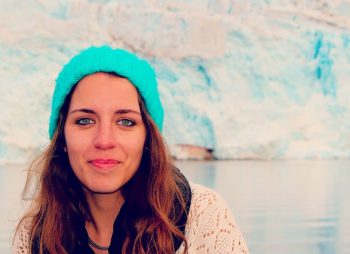Editor’s note: This post was contributed by Sara Aparício, who will join us at ESOC in Darmstadt next week for #Sentinel2Go.
I am Sara from Portugual and currently I live and work in beautiful Rome, Italy, at ESA’s ESRIN establishment. I am quite excited about the launch of Sentinel-2B, as during the past months I have been working with its twin, Sentinel-2A.
The Sentinel-2 mission capability becomes even more powerful when we combine its data with data from other satellites – this is called ‘data fusion’. This is one of the approaches I have been taking for a broad range of topics – and in different locations on our planet: Asia, Europe and the Arctic.
I was always a fan of extreme environments, and for that reason the first location I focused on was Greenland. I am interested in the changing conditions in areas where we can detect toxic remains from World War II military bases, which under a warming temperature scenario might pose a risk to the environment.
In some way this almost feels like some sort of modern archaeology! Inspired by that thought, I have also been assessing Sentinel-2’s capability to detect buried remains from the Neolithic period in Greece. It is quite exciting how its sensors allow us to detect mysterious marks in vegetation.
But, coming back to present day and on-going human activities, with Sentinel-2A, I have also been able to detect changes and monitor land and sea pollution resulting from the worlds’ largest shipbreaking yards in Asia. The dismantling of obsolete vessels releases polychlorinated biphenyls and heavy metals, which affect both public health and surrounding ecosystems.
This led me to work also on mapping malaria risk in Bangladesh – more precisely in Chittagong, where illegal deforestation (sometimes caused due to the aforementioned shipbreaking activities) along with other physical conditions might be increasing the spread of malaria. New, potential habitats for the mosquito carrying the virus have been increasing as well.
With the launch of Sentinel-2B, we will be able to obtain a better temporal resolution, which is quite significant for the activities I mentioned above, and it will also increase our chances of getting cloud-free images from places that are hard to spot, like in the Arctic.
Finally, when I am not ‘travelling’ through satellite images, I love to spend time actually travelling (and chasing auroras!), as well as drawing and painting, playing violin and being a bookworm. I always seek to learn new things and share some of my passions, having been involved in numerous educational and outreach activities for science during the past years.
I am very much looking forward to the launch of Sentinel-2B and to sharing a closer look at the mission from ESOC!
Follow Sara on social media:
@_SaraAparicio_
linkedin.com/in/saraaparicio
facebook.com/sara.f.aparicio


Discussion: no comments